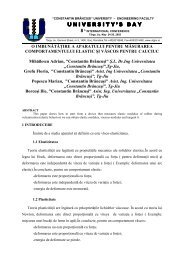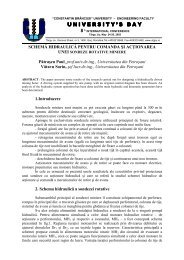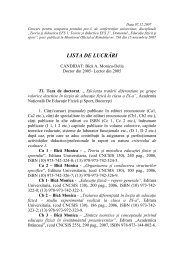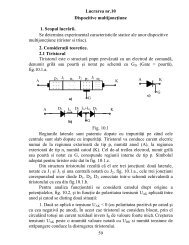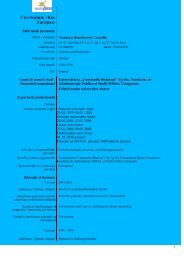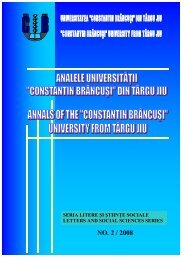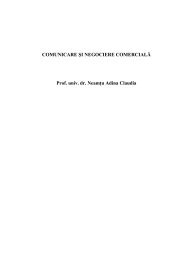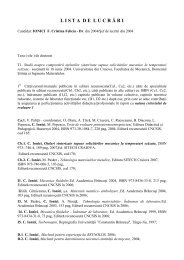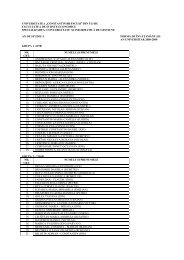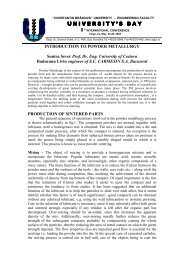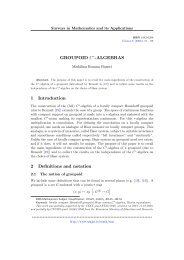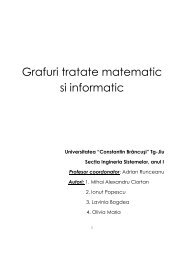5 CAPITOLUL 1 SPAŢII VECTORIALE FINIT DIMENSIONALE 1.1 ...
5 CAPITOLUL 1 SPAŢII VECTORIALE FINIT DIMENSIONALE 1.1 ...
5 CAPITOLUL 1 SPAŢII VECTORIALE FINIT DIMENSIONALE 1.1 ...
Create successful ePaper yourself
Turn your PDF publications into a flip-book with our unique Google optimized e-Paper software.
Spaţii vectoriale finit dimensionale<br />
E5 0 2 1 2 -1 y3 0 0 0 0 1<br />
B x1 x2 y1 y2 y3 B x1 x2 y1 y2 y3<br />
x1 1 0 1 0 0 x1 1 0 0 0 0<br />
E2 0 0 -2 -2 4 y2 0 0 0 1 0<br />
x2 0 1 1 1 -1 x2 0 1 0 0 0<br />
E4 0 0 -5 0 2 y1 0 0 1 0 0<br />
E5 0 0 -1 0 1 y3 0 0 0 0 1<br />
Din tabelul de mai sus se deduce că G1 ∪ G2 formează o bază, deci<br />
subspaţiul V1 + V2 are dimensiunea 5. Din Observaţia 1.7.1 rezultă că V1<br />
+ V2 coincide cu R 5 . Din cele spuse mai sus rezultă că G1 şi G2 sunt<br />
familii liniar independente, deci sunt baze pentru spaţiile generate V1 şi<br />
V2. Astfel dim R V1 =2 şi dim R V2 =3. Aplicând teorema lui Grassmann se<br />
deduce că dim R (V1 ∩ V2) = dim R V1 + dim R V2 - dim R (V1 +V2) = 0.<br />
Deci V1 ∩ V2 = (0) şi nu se mai pune problema determinării unei baze.<br />
1.9 Exerciţii<br />
1. Fie K un corp de caracteristică 0 şi V = K x K. Să se verifice dacă V<br />
împreună cu operaţiile<br />
(x1, x2) + (y1, y2) = (x1 + y1, x2 + y2), (x1, x2), (y1, y2)∈ K x K<br />
α(x1, x2) = (αx1, 0), α ∈K<br />
are o structură de spaţiu vectorial peste corpul K.<br />
R: Nu, deoarece nu este verificată axioma a) din Definiţia <strong>1.1</strong>.3.( 1(x1, x2)<br />
= (x1, 0) ≠ (x1, x2)).<br />
2. Considerăm mulţimea R 4 împreună cu operaţiile<br />
(x1, x2, x3, x4) + (y1, y2, y3, y4) = (x1 + 2y1, x2 + 2y2, x3 + 2y3, x4 + 2y4),<br />
α(x1, x2, x3, x4) = (αx1, αx2, αx3, αx4), α ∈R.<br />
Să se verifice dacă aceasta are o structură de spaţiu vectorial peste<br />
corpul R.<br />
54




